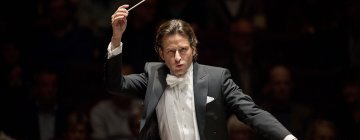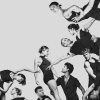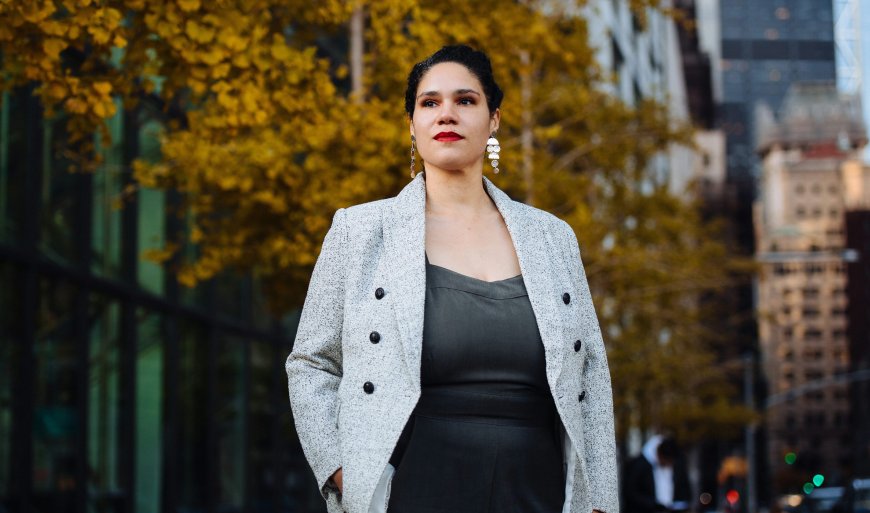
How do we know a work of art will stand the test of time? There’s no simple rule, but when a piece written in reaction to specific events still resonates for listeners living in a different era, that’s a very good sign.
Jessie Montgomery has noticed this start to occur with Divided, her 2020 concerto for cello and string orchestra. “It was originally a reflection of the pandemic — the sense of division and isolation we all felt,” with the cello “often in a different emotional zone than the orchestra,” she said in a recent interview with SF Classical Voice. “But it has a different meaning now.” Today, it’s hard not to hear the piece as an uncanny reflection of our profound political polarization.
Montgomery finds this interpretive shift fascinating — and encouraging. “If the meaning of the piece is evolving with the times,” she said, “I think I’ve done something meaningful.”
Over the past decade, the 43-year-old, also a violinist and Grammy Award winner, has become one of the country’s most-performed contemporary composers. Her works are clever and deeply expressive, accessible without ever resorting to cliche. She’s best known for several short, delightful works for string orchestra, including Strum (2006, rev. 2012) and Starburst (2012).

But Stanford Live audiences will experience a different side of her artistry when she performs with Third Coast Percussion (TCP) on May 7 at Bing Concert Hall. The program will feature Lady Justice, a new work she wrote for the Chicago-based ensemble, as well as an earlier piece of hers for tuba and strings, arranged for percussion quartet by TCP member Sean Connors. To conclude the concert, Montgomery will solo in Lou Harrison’s 1959 Concerto for Violin With Percussion Orchestra.
Montgomery was born and raised in New York City to artistic parents: Her mother was a playwright and actor, her father a composer and filmmaker. She began studying the violin young and wrote her first piece around age 11. She earned her bachelor’s in violin performance from The Juilliard School and a master’s in composition for film and multimedia from New York University. While she has said she does not have fond memories of her time at Juilliard, she returned to the school this winter for a short residency and reports the atmosphere is now quite changed (in a good way).
She recently completed a three-year stint as composer-in-residence at the Chicago Symphony Orchestra and continues to live in the Windy City. Our conversation has been slightly edited for concision and clarity.
The tour that brings you to Stanford will be a rare opportunity for audiences to hear you play the violin. How do you find the time to keep your chops up given all that you’re doing?
Luckily, I’m at the point where a good half-hour [practice] session does wonders. At this point, we’ve performed the Lou Harrison twice. It’s a piece I’ve had in my fingers for about 18 months. Last year, I took a break from writing for two months to learn it.
How did you discover the concerto?
Third Coast Percussion brought it to me. I knew of [Harrison’s] music but not this piece. Interestingly, it has been getting some traction this season. I know two other violinists who are performing it — the concertmaster of the Utah Symphony and a violinist in Virginia. It’s a great piece. I love playing it. It’s extremely well-organized music, so it’s not hard to follow.
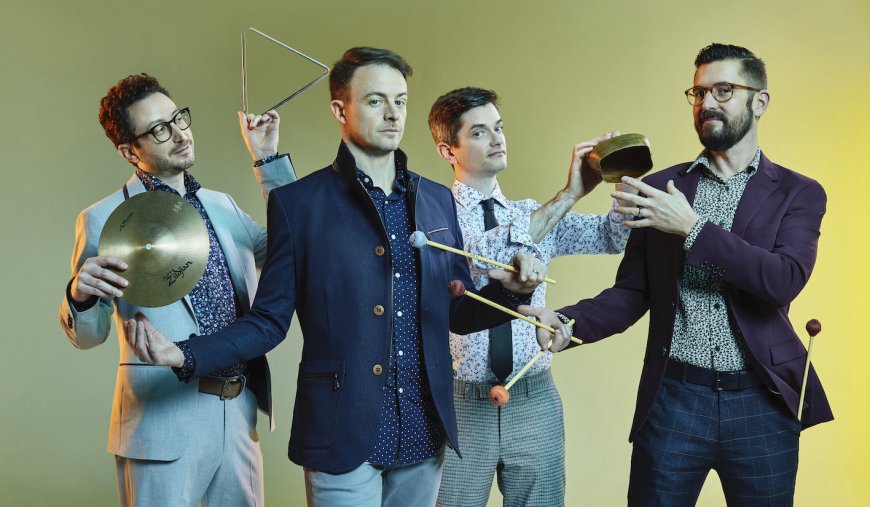
Your most popular pieces are for string orchestra. Collaborating with TCP feels like something of a left turn. How did you get involved with the group?
I have admired them from afar for many years. I first met [TCP member] David Skidmore when we served on the board of Chamber Music America together. When I moved to Chicago, I let Dave, among other people, know I was here. We spoke very casually about doing some work together. Then they came up with this elaborate scheme of commissioning a work and inviting me to perform with them.
We created a working relationship that includes workshopping and arranging. We now have an archive of rehearsal footage that I used to create the two works I wrote for them, including Lady Justice. There’s also other material that will inform future pieces I write for percussion.
In deciding to work with the ensemble, were you consciously attempting to widen your horizons as a composer?
Yes. It was definitely time for me to begin thinking about other mediums. Percussion was new to me when I started writing for them. Also, the project coincided with the percussion concerto I was writing for Cynthia Yeh at the Chicago Symphony.
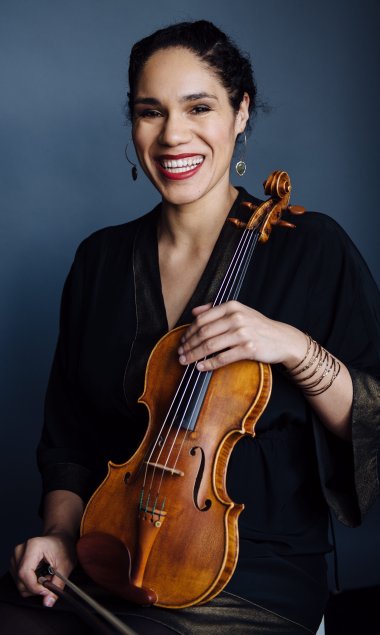
What was the process of composing for a completely new set of instruments like?
There was a lot of learning. I already had a pretty good sense of what was possible choreographically — how to move from one instrument to the next. But there were so many other things to know. Notation has been a big hurdle. There is so much variance.
Being expressive with percussion instruments would seem to be quite different than emoting on a violin.
Absolutely. When you strike something, the sound is there — and then it’s immediately not there. This has forced me to think more structurally. Form and pacing become really important. What are the other [devices you can use] to shape the sound? A lot of it is colors. You can explore a lot of timbral combinations with percussion. I do a lot of that in the first part of Lady Justice. In the second, faster part, the formal rhythmic patterning became the most important thing.
It’s a wonderful medium. Every composer should spend a whole year with a percussion group.
So when you finally compose that huge Mahlerian symphony, you’ll be a wiz at percussion writing.
Exactly!
Is that an ambition of yours?
Not at the moment. I’m writing more chamber music these days — some of which can be orchestrated. There are some concerto projects I’m excited about. I do have a few big orchestral pieces in the pipeline.
You’ve been quoted as saying successful pieces tend to have a beginning, middle, and end. Talk a bit about that need for a narrative, even if it’s an abstract one.
I think it’s really important. My mom was an actor, so I grew up around the theater. I have always been aware of the impact of storytelling and the fact that our brains are basically wired for stories. Sharing stories helps people feel connected. Stories in music are abstract, but we understand on a visceral level when something feels complete or incomplete.
A story doesn’t have to be a narrative in terms of describing a thing that happened. It’s about having things that connect one area of the piece with another. We intuit all of that when we’re listening. I view music as a practice that connects me to others and also connects people who are in the same space listening to it. For me, story adds depth to that connection.
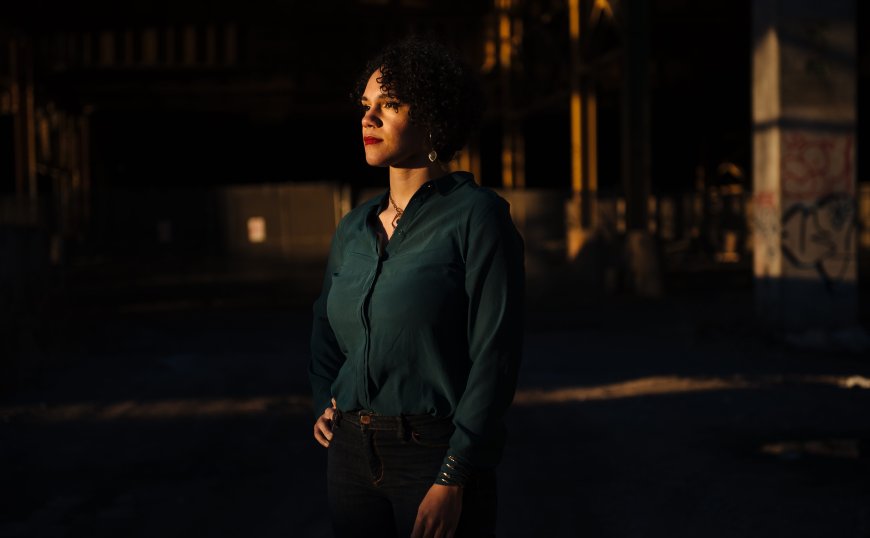
Speaking of other art forms, I’ve read that you enjoy visiting museums because you find inspiration in the visual arts. How does that work?
It’s a matter of finding different references. I can imagine the images in a painting as music. It’s a good creative exercise. I’m inspired by poetry [as well as many] other art forms. I turn to them often to find correlations in terms of pacing or framing or composition. Some indescribable thing happens when you say, “I think I can hear what that would be like in music.” It’s a playful thing. I don’t think it’s a skill.
Sounds more like a gift! But let me ask you about an impediment to writing you recently described in another interview. You said that sitting down to write, you sometimes feel an additional layer of pressure — a fear that you’ll be judged on how “Black” a piece does or doesn’t sound. I’m assuming that layer of self-consciousness is not helpful.
No. This has been a preoccupation for some time, but I’m maturing. It’s way less of an issue to me now than it was even a couple of years ago. It took time to get over, but I think I’m over it at this point. I’m exploring things because of how they make me feel, how they stimulate my intellect, and how they reflect where I am in time and space.
How did you develop that confidence?
Mainly through forming bonds with other Black composers, who have gone through that same struggle and gotten over it in their own ways. That’s been extremely helpful.
Do you see yourself as part of a lineage of American composers, such as George Gershwin and William Grant Still, who incorporated a wide range of influences into their work in an attempt to create a uniquely American sound?
For sure. I’ve been influenced by those composers in many ways. I consider it an asset to be able to think broadly about style. I grew up in a diverse community with lots of cultural activity of different kinds. That mashing together is really exciting creatively.
Needless to say, not everyone in today’s political environment sees diversity as a positive. That brings up the issue of politics in music. Some of your pieces, including Lady Justice and Banner, which juxtaposes “The Star-Spangled Banner” with other anthems, are subtly political. I’m wondering what you feel the role of the artist is in difficult times such as these.
I think the role of the artist is to reflect what’s happening. Listening to music in and of itself doesn’t make you think critically about politics. Now, a piece like Julia Wolfe’s Her Story, which has words, has a clear message. My pieces are more fantastical in a way.
I think in terms of “what if?” Banner is an example. What if we look at “The Star-Spangled Banner” through the lens of multiculturalism and celebrate multiple cultures rather than just the establishment of the United States? In my portrayal of political messages, I tend to be hopeful.
